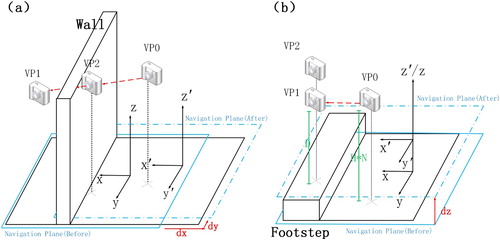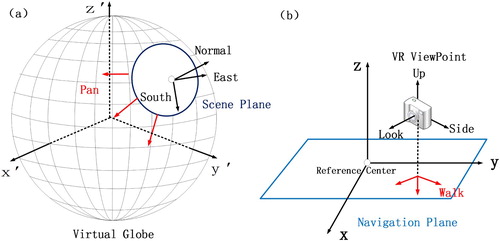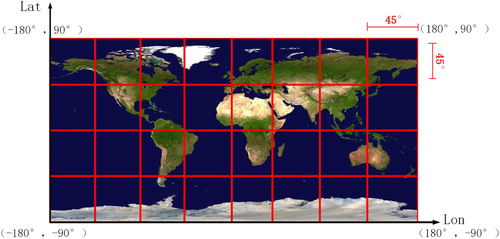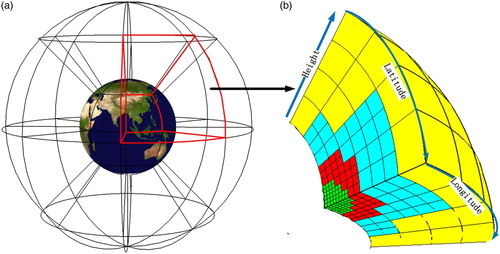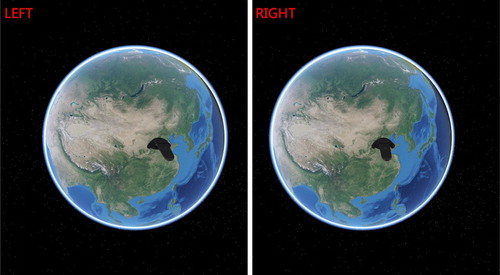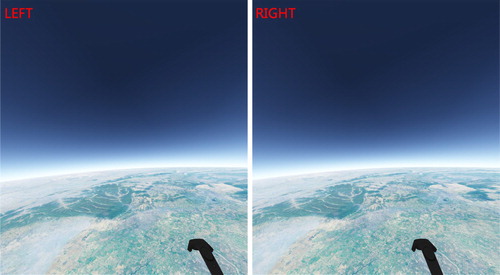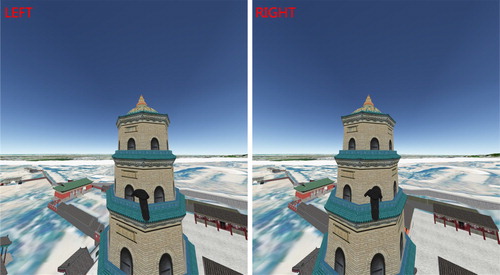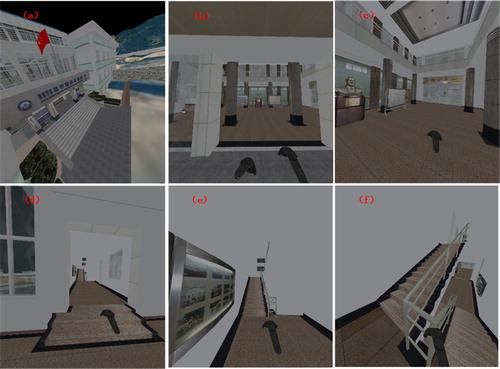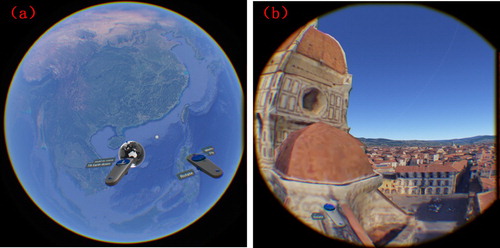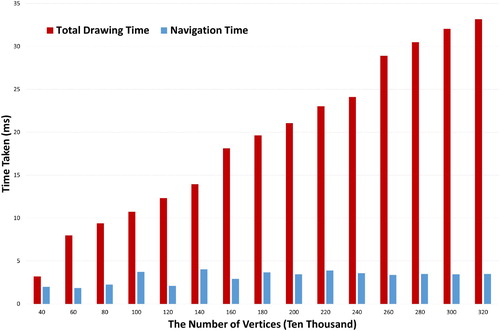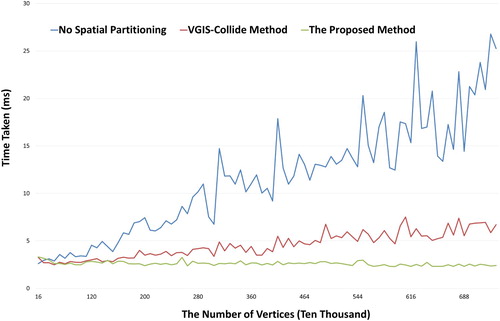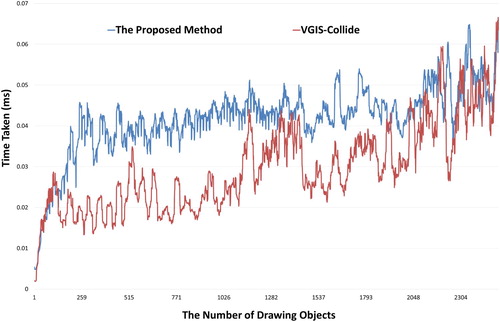Figures & data
Figure 1. Simultaneous navigation in a real space and a virtual space: (a) a user navigates in a real space; (b) a user navigates in a virtual space.
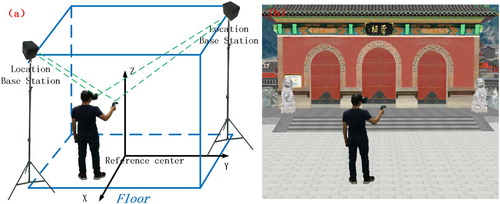
Figure 2. Multi-scale navigation in a virtual globe environment realized by altering the viewing distance.
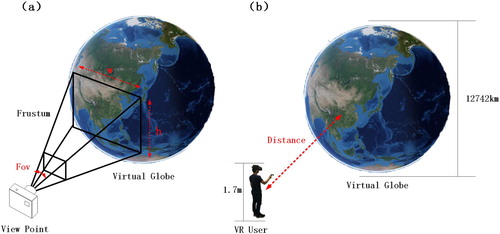
Figure 3. A VR user interacts with a multi-scale virtual environment: (a) a VR user touches and rotates the globe with a hand controller; (b) a VR user freely walks through a city and collects buildings.
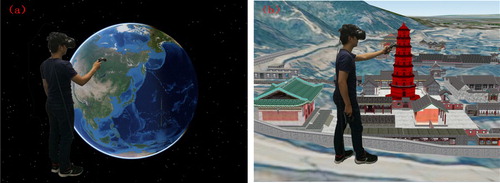
Figure 4. Collision between the VR viewpoint and virtual scenes: (a) the VR viewpoint goes into a wall because the obstruction of the wall is not considered; (b) the VR viewpoint is gradually covered by a mountain because the topographic relief is not considered.
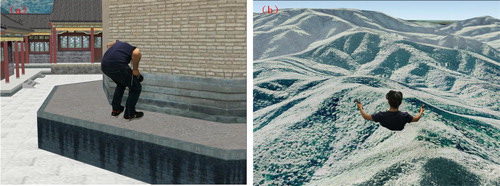
Figure 6. Relative location relationships between the scene and navigation planes: (a) aligned; (b) rotational.

Figure 7. Relative location relationships between the scene and navigation planes: (a) scaling; (b) offset.
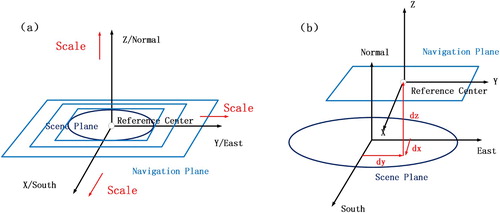
Figure 10. (a) When moving the navigation plane will cause a collision between the VR viewpoint and the scene, the request for movement is declined to prevent the VR viewpoint from going into the wall; (b) when moving the navigation plane will not cause a collision between the VR viewpoint and the scene, the request for movement is accepted and the navigation plane is lifted upward to enable its origin to adjoin the local scene to prevent the VR viewpoint from sinking into the ground.
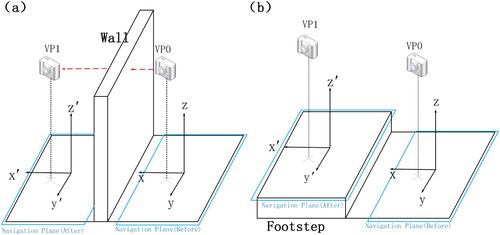
Figure 11. (a) If the VR viewpoint goes into a wall, the navigation plane is horizontally offset. As a result, the VR viewpoint horizontally moves from VP1 to VP2. (b) If the VR viewpoint sinks into the ground, the navigation plane is vertically offset. As a result, the VR viewpoint vertically moves from VP1 to VP2.
